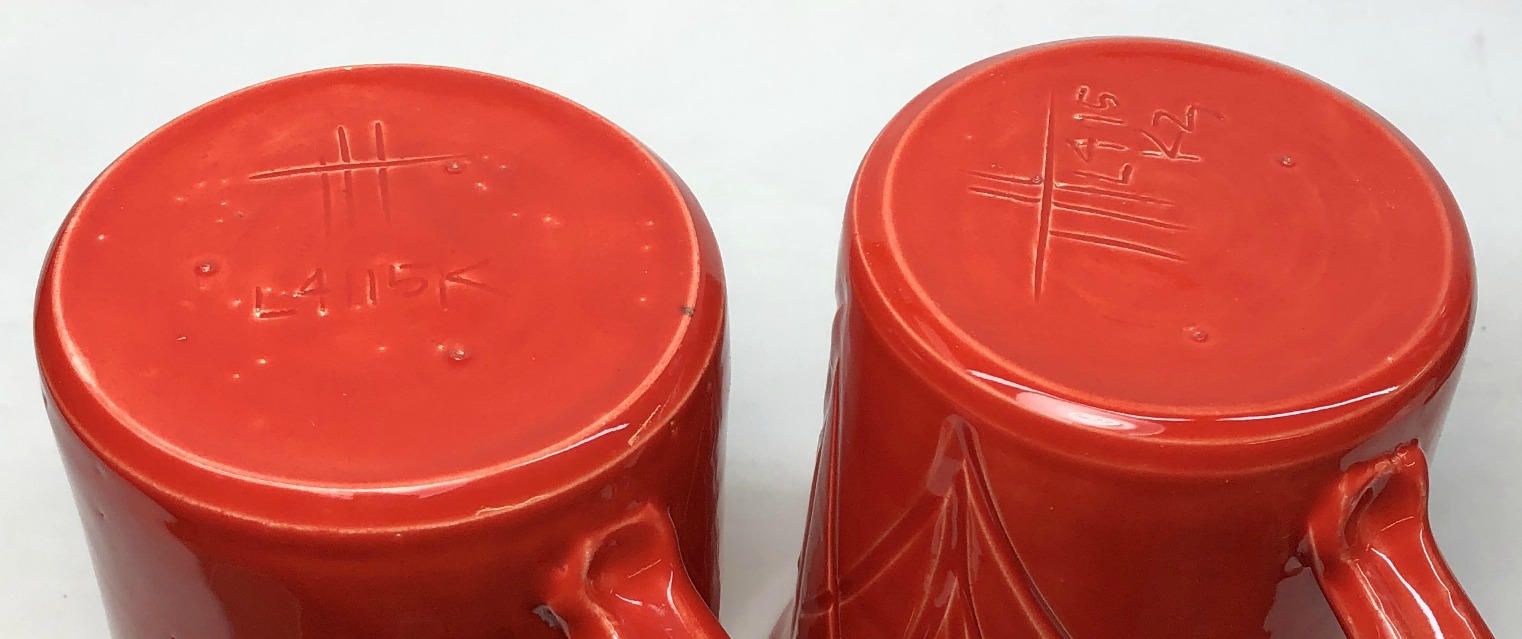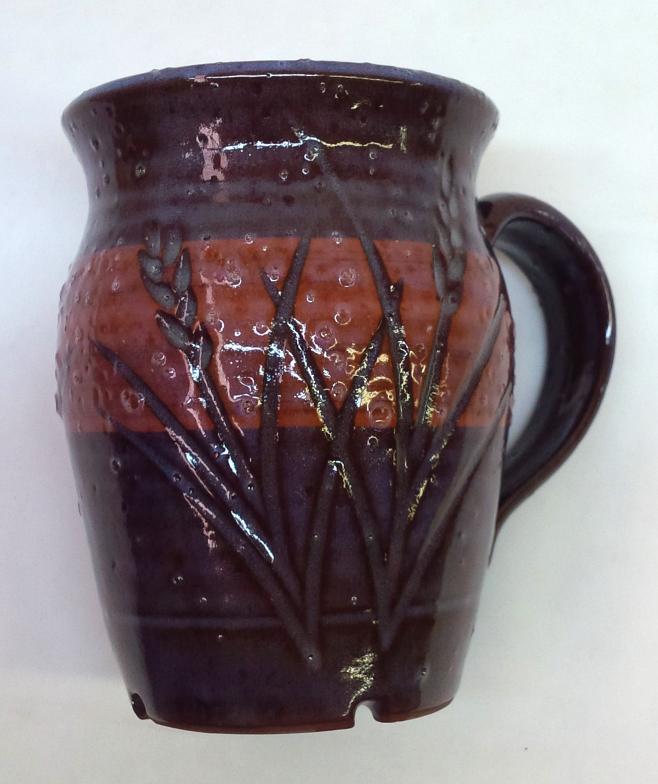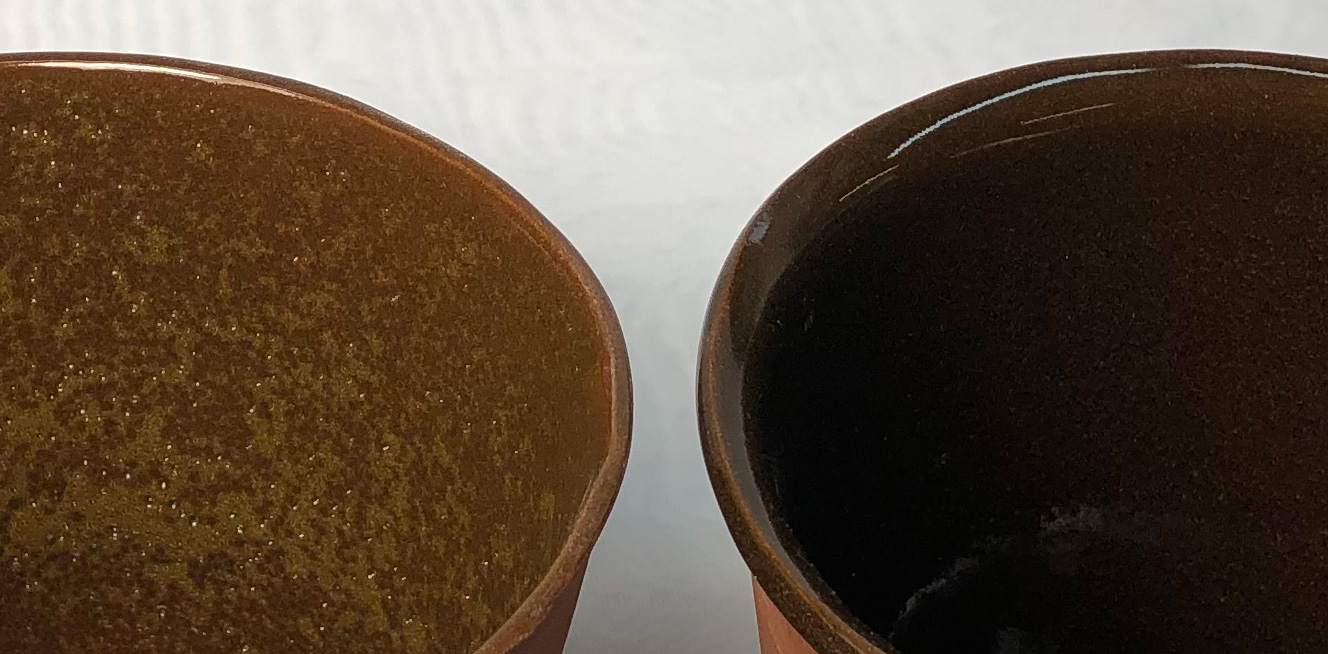| Monthly Tech-Tip | No tracking! No ads! | |
Drop-and-Soak Firing
A kiln firing schedule where temperature is eased to the top, then dropped quickly and held at a temperature 100-200F lower.
Key phrases linking here: drop-and-soak firing, drop and soak, drop-and-soak, drop and hold, drop-and-hold - Learn more
Details
Rather than soak (or hold) a kiln at top temperature during a firing, the concept with a drop-and-hold is to approach the top temperature slowly (and only hold for a few minutes) and then drop quickly (by 100-200F) and hold the temperature there instead. At that temperature, the increased viscosity of the melt is able to overcome the surface tension that maintains surviving bubbles. The result is smoother, defect-free surfaces. Although your glaze manufacturer may not indicate that this type of firing is helpful to finished product quality, your clay body manufacturer may not agree.
These schedules are often accompanied by a continued controlled drop in temperature through the phase where the melt solidifies (e.g. down to 1400F). This improves the appearance of those that variegate and crystallize (but can increase matteness).
The temperature of the hold is often a matter of experimentation. Glazes with plenty of melt fluidity can stay remarkably fluid for hundreds of degrees below the firing temperature. The lowest possible hold temperature at which the glaze has sufficient fluidity to heal defects is best.
The benefits of this type of firing schedule make it worthwhile to learn how to program your own kiln controller. Controllers can remember schedules you enter so you only have to do it once. At the same time, we recommend becoming cognizant of the accuracy of your controller by verifying it with cones. Manually-entered programs are the only way to compensate for this inaccuracy (for example, my controller thinks that cone 6 is 2232F, but 2200F is what drops my self-supporting cone to the right angle).
Drop-and-hold schedules need to be accompanied by other best practices for success. For example, make sure ware is completely dry. Apply glazes as evenly as possible (usually by dipping). Maintain your dipping glazes at a practical specific gravity and viscosity. Use an engobe over the body for functional surfaces that will have a white or clear glaze finish.
Related Information
Drop-and-soak firing fixes this pinholing problem

This picture has its own page with more detail, click here to see it.
Clay bodies having coarser particles, e.g. those ground at 42 mesh, often create pinholes on the fired glaze surface. The problem is most serious on tooled surfaces (like the base of this mug on the left). These two low-temperature pieces were made from the same clay and the same glaze. But the one on the right was fired using the C04PLTP drop-and-hold firing schedule. That has eliminated the problem on the mug on the right.
How we fixed this case of serious blistering

This picture has its own page with more detail, click here to see it.
An extreme example of blistering in a piece fired at cone 03. The glaze is Ferro Frits 3195 and 3110 with 15% ball clay applied to a bisque piece. Is LOI the issue? No, this glaze has a low LOI. Low bisque? No, it was bisqued at cone 04. Thick glaze layer? Yes, partly. Holding the firing longer at temperature? No, I could hold this all night and the glaze would just percolate the whole time. Slow cooling? Close, but not quite. The secret I found to fix this was to apply the glaze in a thinner layer and drop-and-hold the temperature for 30 minutes at 100F below cone 03. Doing that increased the viscosity of the glaze melt to the point that it could break the blisters (held by surface tension) while still being fluid enough to smooth out the surface.
Why are rutile blue glazes susceptible to blistering?

This picture has its own page with more detail, click here to see it.
This blistering problem is common in rutile blue glazes, especially high-temperature - this is not saleable. The reason relates to what it takes to create this kind of vibrant variegated aesthetic: Melting the crap out of the glaze and cooling it just right. This particular one is being fired to cone 11 down to get enough melt fluidity to make it crystallize and phase separate. It seems logical that if the glaze is melting so well it should be able to heal any bubbles that form and break (these are more than usual because the body is being overfired and generating gases). However, the fluidity comes with surface tension that can hold the bubbles intact. Each of these holes in the glaze is a product of that - plus another factor: Cooldown is rapid enough that the melt is not sufficiently fluid to heal after bubble breakage. The potter has been using this glaze for many years with success, but a small change in process or materials has occurred to push it past a tipping point. Solutions? A drop and hold firing. Add a flux (e.g. a little lithium or a frit) to make it melt fluid at cone 10R (where the body generates less gasses of decomposition). Replace any high LOI materials in the glaze itself with other materials to source the same oxides.
Is it any wonder that glazes fire with defects?

This picture has its own page with more detail, click here to see it.
Both pieces are the same clay, same glaze. The one on the left went to cone 4. Notice how full of holes and bubbles the glaze is. The one on the right went to cone 6 using the C6DHSC firing schedule. It is perfectly smooth and glassy.
Manually programming a Bartlett V6-CF hobby kiln controller

This picture has its own page with more detail, click here to see it.
I document programs in my account at insight-live.com, then print them out and enter them into the controller. This controller can hold six, it calls them Users. The one I last edited is the one that runs when I press "Start". When I press the "Enter Program" button it asks which User: I key in "2" (for my cone 6 lab tests). It asks how many segments: I press Enter to accept the 3 (remember, I am editing the program). After that it asks questions about each step (rows 2, 3, 4): the Ramp "rA" (degrees F/hr), the Temperature to go to (°F) to and the Hold time in minutes (HLdx). In this program I am heating at 300F/hr to 240F and holding 60 minutes, then 400/hr to 2095 and holding zero minutes, then at 108/hr to 2195 and holding 10 minutes. The last step is to set a temperature where an alarm should start sounding (I set 9999 so it will never sound). When complete it reads "Idle". Then I press the "Start" button to begin. If I want to change it I press the "Stop" button. Those ten other buttons? Don't use them, automatic firing is not accurate. One more thing: If it is not responding to "Enter Program" press the Stop button first.
Cone 6 glazes can seal the surface surprisingly early - melt flow balls reveal it

This picture has its own page with more detail, click here to see it.
These are 10 gram balls of four different common cone 6 clear glazes fired to 1800F (bisque temperature). How dense are they? I measured the porosity (by weighing, soaking, weighing again): G2934 cone 6 matte - 21%. G2926B cone 6 glossy - 0%. G2916F cone 6 glossy - 8%. G1215U cone 6 low expansion glossy - 2%. The implications: G2926B is already sealing the surface at 1800F. If the gases of decomposing organics in the body have not been fully expelled, how are they going to get through it? Pressure will build and as soon as the glaze is fluid enough, they will enter it en masse. Or, they will concentrate at discontinuities and defects in the surface and create pinholes and blisters. Clearly, ware needs to be bisque fired higher than 1800F.
Inbound Photo Links
 Iron oxide as a fining agent to debubble a low fire transparent |
 What if you just cannot solve a pinhole problem? |
 Same body, glaze, thickness and temperature. Why did the front one foam up? |
Links
| Glossary |
Firing Schedule
Designing a good kiln firing schedule for your ware is a very important, and often overlooked factor for obtained successful firings. |
| Glossary |
Glaze Bubbles
Suspended micro-bubbles in ceramic glazes affect their transparency and depth. Sometimes they add to to aesthetics. Often not. What causes them and what to do to remove them. |
| Glossary |
Pinholing
Pinholing is a common surface defect that occurs with ceramic glazes. The problem emerges from the kiln and can occur erratically in production. |
| Firing Schedules |
Cone 6 Drop-and-Soak Firing Schedule
350F/hr to 2100F, 108/hr to 2200, hold 10 minutes, freefall to 2100, hold 30 minutes, free fall |
| Firing Schedules |
Plainsman Cone 6 Drop-and-hold, Slow Cool
350F/hr to 2100F, 108/hr to 2200, hold 10 minutes, fastdrop to 2100, hold 30 minutes, 150/hr to 1400 |
| Firing Schedules |
Low Temperature Drop-and-Hold
|
| URLs |
https://insight-live.com/insight/share.php?z=8JFvDgDc3X
Plainsman Zero3 Glaze L,K,H and Firing Schedule |
| Media |
Manually program your kiln or suffer glaze defects!
To do a drop-and-hold firing you must manually program your kiln controller. It is the secret to surfaces without pinholes and blisters. |
| Projects |
Build a kiln monitoring device
|
| Troubles |
Orange Peel Surface
Orange peel is a defect or physical property of ceramic glazes |
| By Tony Hansen Follow me on        |  |
Got a Question?
Buy me a coffee and we can talk

https://digitalfire.com, All Rights Reserved
Privacy Policy
